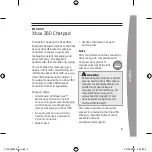
52
SBC session border controllers
–
403, 603 prohibitions
— the call was rejected with the reason "call prohibition";
–
4xx except aforecited codes
— other calls with SIP responses 400-499 received on them that do not fall
into the categories above;
–
5хх system failure
— calls with SIP responses 500-599 received on them;
–
6xx except aforecited codes
— calls with SIP responses 600-699 received on them
SBC Configuration
Functionally, SBC can be described as a set of tunnels between different (or within the same) subnets that
allow both signalling and speech (or other) information to be transmitted between users. The tunnel is terminated
on each side by an SBC SIP server, the exit point for which is a SIP transport. SBC switches messages between SBC
SIP servers in accordance with the specified rules. In general, several SBC SIP servers can be created in the same
subnet (e.g. tunnels from the same subnet to different subnets). The speech information can either be transmitted
in the same subnet as the signalling one (where SBC SIP server is located) or in a separate subnet. To transmit speech
information, a range of ports is allocated.
General algorithm for signalling passing through SBC
Consider the call passing through SBC for two terminal nodes. Incoming signalling is received on one of the
SBC interfaces. An available incoming destination is searched by transport, which is linked to the interface and IP
address of the call source. Then a corresponding set of rules is checked according to the destination setting. If the
signalling matches any of the rules in the set where the action
"send to destination"
or
"send to trunk"
is specified,
the call is passed to the destination specified in the rule. The destination selected as outgoing indicates the transport
through which the signalling is to be sent next and the remote address of the node to which the signalling is to be
sent.
The one-way call has been considered above. In order to ensure that calls go both ways, the destinations
used together should be set symmetrically. Two sets of rules to be used for call direction should be created and
appropriate sets of rules should be specified in each destination.
Signalling passing for subscribers registered via SBC
When subscribers are registered via SBC, signalling is carried out in the same way as described above, except
that calls must go through the destinations configured under
"SIP Users".
In this case, the incoming destination is
only searched by the SIP transport that is bound to it. The outgoing direction in this case will be that behind which
the register-sender is located.
Note that when calling towards a registered subscriber it is not necessary to link rule sets to the destination
where the register-sender's address is specified. SBC will remember the directions used for registrations that have
passed through it and will use this as a basis for sending a signalling to the subscriber coming from the register-
sender.















































